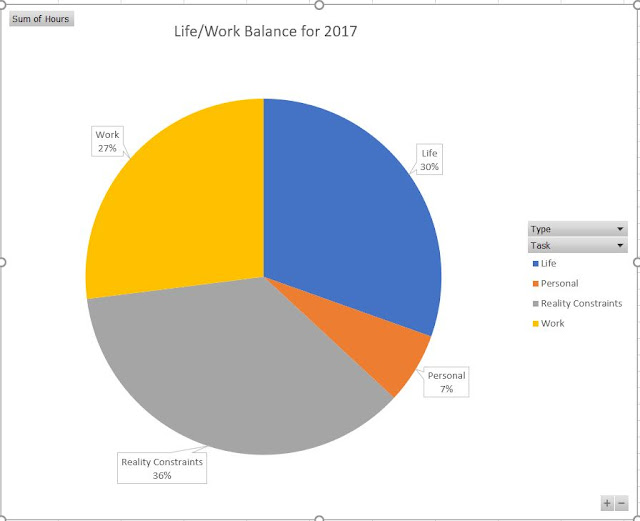Two years ago around this time, I explored my progress with respect to my career choices by performing some self-reflection, by asking myself some searching questions. Later I shared my findings on this blog, in this post: Reflections on my career in the hope my story could resonate with people who may be experiencing similar challenges. I'm glad I did so since people did actually reach out, thanking me for the post & providing feedback.
Anyway, two years have since passed since I last shared the cross-road I found myself at, since I'd started my journey with this path in mind...
a) Software Team Lead -> Software Manager -> Senior Manager -> VP -> Director -> CEO
b) Principal Engineer -> Senior Principal -> Technical Director -> CTO -> CEO
b') Principal Engineer -> Architect -> Senior Architect -> Director -> CTO -> CEO
c) Technical Project Manager -> Senior Project Manager -> Program Manager -> Director -> CEO
...but instead found myself being in the technical project management space for too long, that people started naturally profiling me as the "rockstar program manager" (check out my LinkedIn recommendations and you'll immediately see why). Whilst this is a great place to be (don't get me wrong, I think a career in Project Management is one of the most versatile, lucrative and flexible professions out there, I highly encourage the move), for me, I felt I'd learnt and experienced enough, that I didn't see myself doing that for much longer. I did enjoy the project leadership, but I wanted more. Another factor that was causing me anxiety was that my role as a management consultant was getting a bit boring, what I imagined it to be versus the reality were not fully aligned. My time was fully consumed, leaving me little time to explore my own ideas to look at new ideas/products (my own start-up), I might as well have been a permanent employee - I was living an illusion, in reality I was basically a "perm-tractor". I had built up enough personal equity, credibility to enjoy a decent level of referent power to indirectly influence outcomes in my favour, I still wanted more - I wanted to feel more alive than being a neutral facilitator (which in itself I found quite rewarding but also quite energy-draining).
So what did I do? I went back to my RAGE model, here's what I had for my persona as a professional:
- As a software professional, I would like to learn & grow, seek out individuals, companies and interactions, to reach heights of excellence, so that I can not only enjoy the profession, but take me to new opportunities & experiences. I want to surround myself with people that motivate me, journey together to grow to the next level.
- Want to work with inspiring, motivated leaders that I can learn from. Want to surround myself with deeply technical, bright people. Want to work with people who know what they're doing or unafraid to take chances. Want to work with disruptors, people unafraid to push boundaries, challenging status quo. Want to work with people who are equally, if not, more motivated than me. Want to learn from people so that I can grow and do my own thing one day. Want to be with fellow professionals that will help take me to the next level. Want to work on projects and products that are interesting and cutting edge, not "me-too, copy-cat products. Want to stay at the cutting edge of software, be involved in the next wave like cloud services, mobile app development, car infotainment / self-driving cars, drone software, cloud, etc. Want a chance to start-up my own business in ideas in product development, services-space like crowd-based testing, etc.
- As a professional, I want to run a company, lead my own division. I believe the experiences and skills acquired over the years puts me a good position to do this, regardless of technology stack. I haven't been successful in launching my own start-up, so the best place would be to go back to corporate, be part of story much bigger than myself, and get the experience I need.
So what's happened in the last two years?
I made a decision to leave project leadership behind. I explored opportunities that aligned with my aspiration of running my own division. I took a chance by breaking the perception that I'm the guy to call in to rescue failing projects - landing an engagement as interim GM/CTO. A year later, I decided to leave consulting (248 weeks consulting) altogether and enter the corporate world as a permanent employee, taking on a CTO/Head of Technology role :-)
So my path has indeed played out a little different but now seems to be back on track:
Software Engineer > Senior Engineer > Technical Project Manager > Senior Project/Program Manager > Principal Engineer > Program Manager > Management Consultant > CTO (now) > CEO (next)
Lessons learnt / myths busted?
Who says you can't change tracks in between (especially switch to project management) and switch back to technology leadership? It can definitely be done!
Be prepared to Leave it All Behind as long as you believe you're heading in the general direction you seek (maintain your guiding compass always).
Take time to process your situation with Life/Work by investing the time in self-reflection & planning. I found my RAGE model to be a constant source of guidance. It does take some self-control, but it will be worth it in the end, just keep at it...
It is indeed possible to start from humble beginnings and change your life for a better outcome...










